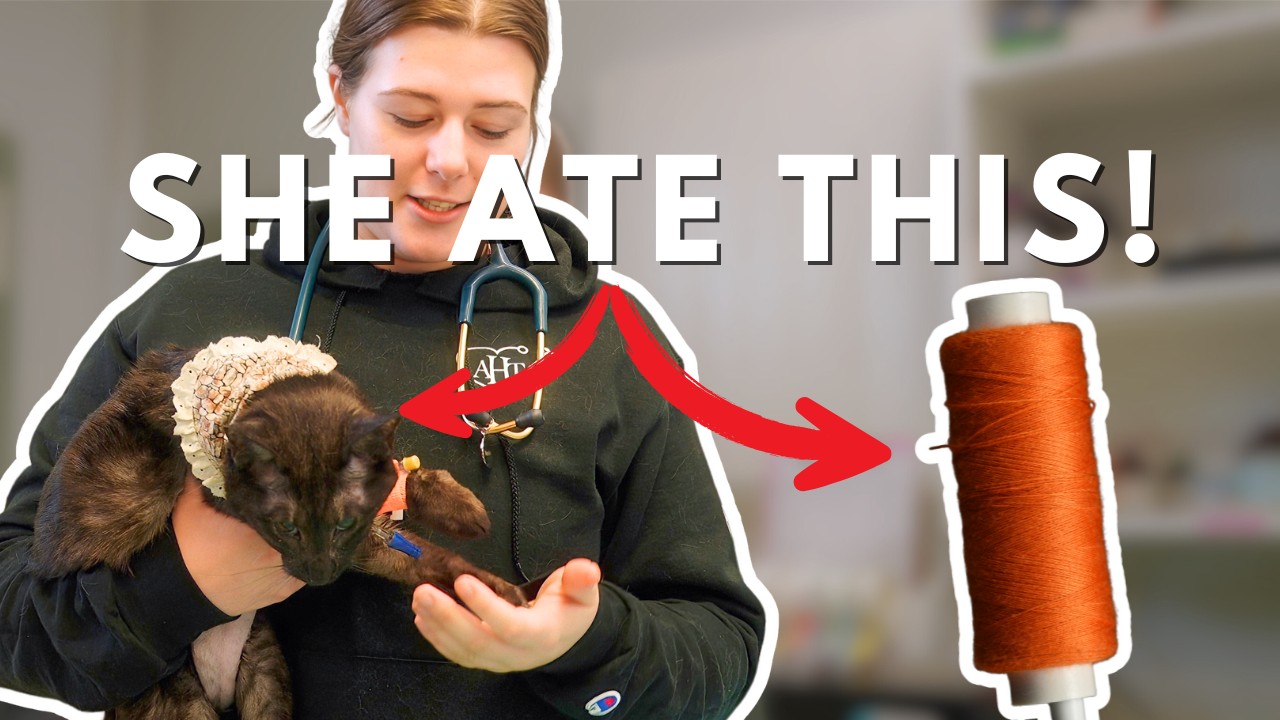30 Dec Help! My Cat Ate String – What Should I Do?
Introduction: Wren’s Scary Encounter with String Cats are curious by nature, and sometimes their curiosity can lead to serious trouble. Meet Wren, a sweet and affectionate cat who found herself in a dangerous situation after swallowing a piece of string. When Wren arrived at i-Care Veterinary Hospital in Coombs, BC, she was vomiting, lethargic, and in pain. Her case highlights the dangers of string ingestion in cats—and serves as a reminder to cat owners about what to do in emergencies like this. https://youtu.be/VFECpFZMrn0 Why Is String Dangerous for Cats? Cats love to chase and chew on string, yarn, ribbons, and shoelaces. But if swallowed, these items can quickly become life-threatening. The Risks Include: Intestinal Blockages – Strings can become stuck under the tongue or in the stomach, pulling tightly through the intestines and causing them to bunch up like an accordion. Tears and Perforations – A taut string can saw through the delicate walls of the intestines, leading to internal infections (peritonitis) or sepsis. Emergency Surgery – If the string can’t pass naturally, surgery may be required to remove it, which can be expensive and risky. Wren’s Story: Diagnosis and Treatment Wren’s case highlights how quickly string ingestion can escalate—and how prompt veterinary care can make all the difference. Day 1: Emergency Visit Wren came in vomiting and showing signs of severe distress. Upon examination, Dr. Alastair Westcott found a string looped around her tongue, pulling tightly through her intestines and causing painful bunching. Dr. Westcott immediately cut the string under her tongue to relieve tension, which improved her comfort and stabilized her condition. Wren was then sent home overnight with instructions for careful monitoring. Day 2: Follow-Up Ultrasound The next morning, Wren returned for an ultrasound exam with Dr. Alastair Westcott, a veterinary ultrasonographer at i-Care. Why Ultrasound? Ultrasound provides a non-invasive, real-time view of a pet’s internal organs. It allows us to: Detect blockages, inflammation, or intestinal bunching. Decide whether surgery is necessary—or whether it can be safely avoided. Monitor changes without exploratory surgery, reducing stress and costs. The ultrasound revealed that Wren’s intestines were no longer tightly bunched, and the string appeared to be moving through safely. We opted to continue monitoring her carefully rather than rush into surgery. What to Do If Your Cat Eats String 1. Don’t Pull the String! If string is visible in your cat’s mouth or rectum, never pull on it. This could cause internal damage, including intestinal tears or rectal prolapse. Instead, trim the visible portion and call your veterinarian...

